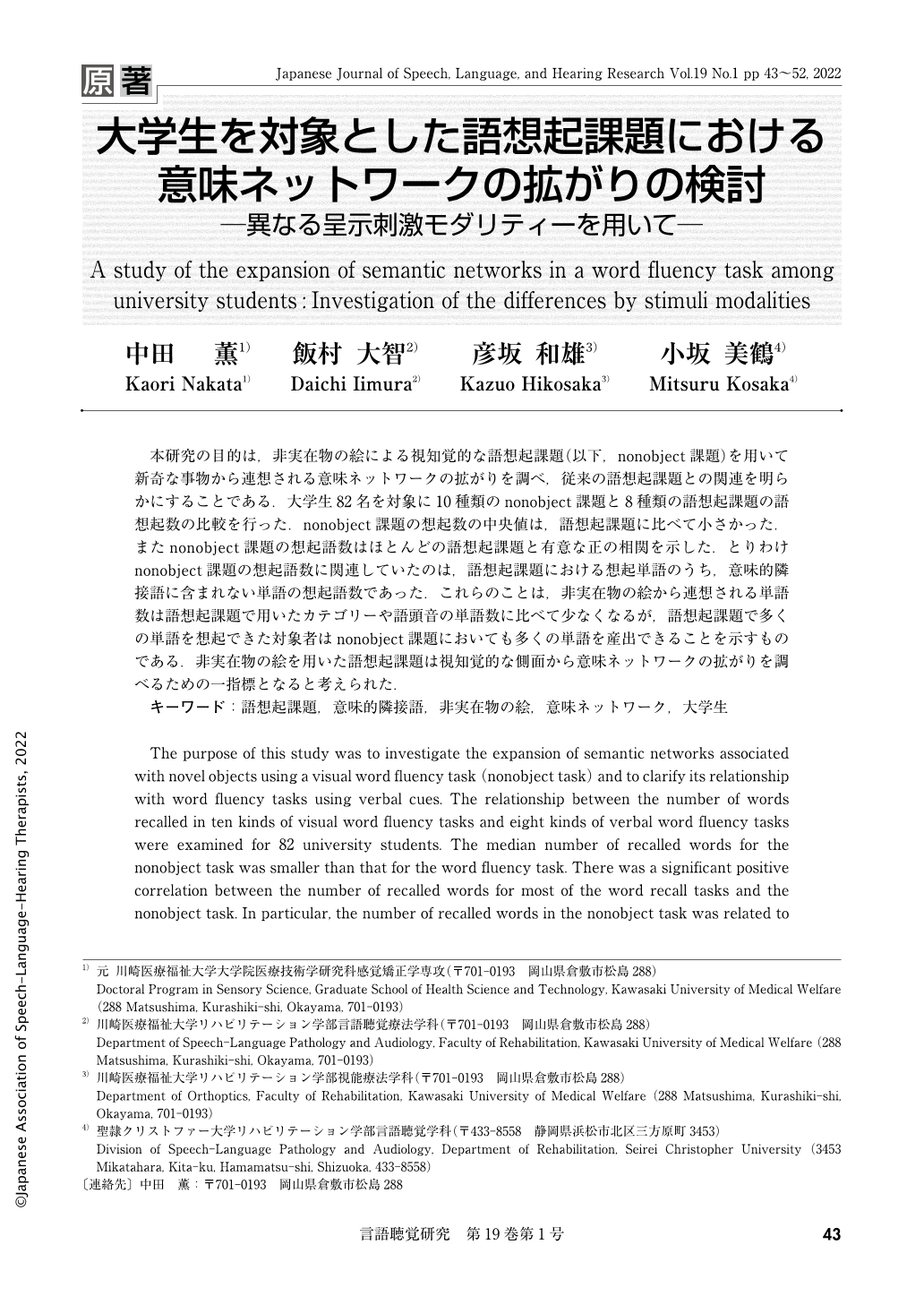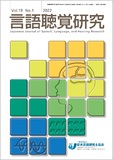Japanese
English
- 有料閲覧
- Abstract 文献概要
- 1ページ目 Look Inside
- 参考文献 Reference
本研究の目的は,非実在物の絵による視知覚的な語想起課題(以下,nonobject課題)を用いて新奇な事物から連想される意味ネットワークの拡がりを調べ,従来の語想起課題との関連を明らかにすることである.大学生82名を対象に10種類のnonobject課題と8種類の語想起課題の語想起数の比較を行った.nonobject課題の想起数の中央値は,語想起課題に比べて小さかった.またnonobject課題の想起語数はほとんどの語想起課題と有意な正の相関を示した.とりわけnonobject課題の想起語数に関連していたのは,語想起課題における想起単語のうち,意味的隣接語に含まれない単語の想起語数であった.これらのことは,非実在物の絵から連想される単語数は語想起課題で用いたカテゴリーや語頭音の単語数に比べて少なくなるが,語想起課題で多くの単語を想起できた対象者はnonobject課題においても多くの単語を産出できることを示すものである.非実在物の絵を用いた語想起課題は視知覚的な側面から意味ネットワークの拡がりを調べるための一指標となると考えられた.
The purpose of this study was to investigate the expansion of semantic networks associated with novel objects using a visual word fluency task (nonobject task) and to clarify its relationship with word fluency tasks using verbal cues. The relationship between the number of words recalled in ten kinds of visual word fluency tasks and eight kinds of verbal word fluency tasks were examined for 82 university students. The median number of recalled words for the nonobject task was smaller than that for the word fluency task. There was a significant positive correlation between the number of recalled words for most of the word recall tasks and the nonobject task. In particular, the number of recalled words in the nonobject task was related to the number of words that were not included in the semantic neighbor in the word fluency task. These results suggest that the range of semantic networks associated with the nonobject is narrower than that of categories and word-initial sounds (word fluency task), but that participants who can recall a large number of words in the word fluency task can also produce a large number of words in the nonobject task. Therefore, the nonobject task can be used as a means of investigating the expansion of semantic networks from a visual perceptual perspective.

Copyright © 2022, Japanese Association of Speech-Language-Hearing Therapists. All rights reserved.


